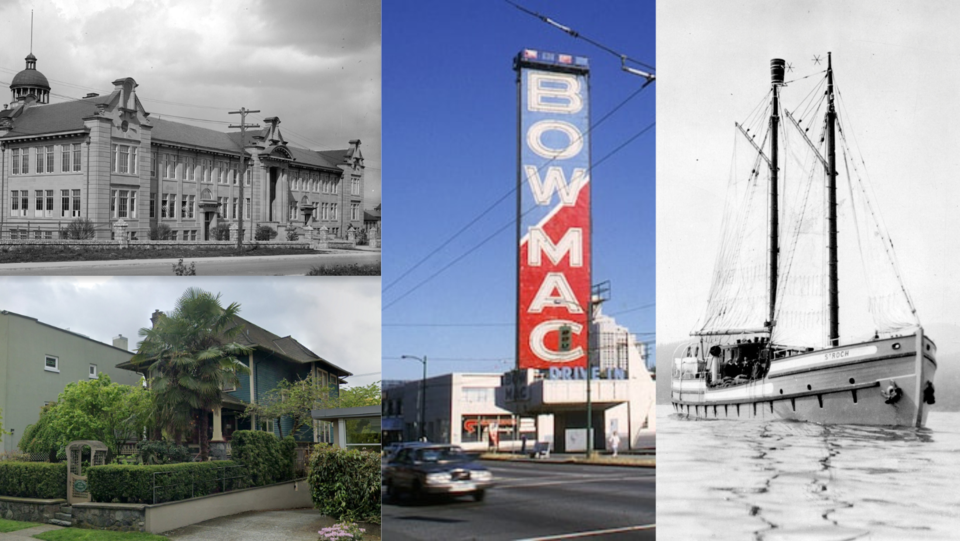Even in Vancouver's short history, there have been many historic and heritage sites created.
Some predate the city, but the majority come from the city's earlier years. Many of them are buildings built in the 1910s or 1920s, but there's a fair amount of variation.
There are also some unusual historic sites, and here are five of them (this is not an exhaustive list of either odd or historic sites in Vancouver).
This is perhaps the most noticeable historical oddity. These days there's a Toy "R" Us sign tacked on; to some it looks like the toy company took advantage of the bigger sign but didn't order big enough letters.
In fact, the Bowmac sign itself is a heritage landmark worthy of preserving. It was built in 1958, and was one of the best known of Vancouver's numerous neon signs.
Not many boats are federal historic sites, but not many boats of the history of the St. Roch.
The small ship at the Vancouver Maritme Museum is what's under the A-frame at the museum. The schooner was actually part of the RCMP's fleet for decades.
The St. Roch's fame comes from a few things (including being the only real federal presence in the high Arctic), but the big one is its voyage from the Pacific to the Atlantic via the Northwest Passage; it was the first ship to make that historic journey.
This one isn't an official historic site, but it is a historic oddity.
In 1872 it was mined from a quarry in Nanaimo for use at an American mint.
However, the ship carrying it sank near Mayne Island.
More than 100 years later the wreck was found just 40 feet below the ocean surface, and an effort was made to recover what had sunk.
In 1987 the column, along with other stonework, was pulled from the depths. It's twin was taken back to Nanaimo, while the other was taken to the museum.
On the southwestern edge of the Vancouver General Hospital there's an old wall. It may not look like much, but it's its own heritage site, as the last piece of King Edward School.
It was the first secondary school in Vancouver south of False Creek when it was built in 1905; at the time the hospital was a neighbour. The area had just been logged.
In fact, it was the first significant secondary school in the city; before that there was an eight-classroom structure at Cambie and Dunsmuir.
Some older readers may remember the fire that destroyed the building in 1973; the wall survived the fire and has remained despite the changes around it.
While old (built in 1897) the house at 1114 Barclay St. may seem fairly typical for the neighbourhood, and it is.
What makes it an unusual historic location is what happened there; in was penned inside by Ewing Buchan and became the nationalistic hymn of choice on the West Coast.
It was very pro-Britain with lines like:
At Britain’s side, whate’er betide
And referencing the national anthem of the United Kingdom:
With hearts we sing, “God save the King”,
The version of O Canada written by Robert Stanley Weir started to become the national anthem in 1967, but the process wrapped up in 1980 (though the lyrics have evolved over time).




